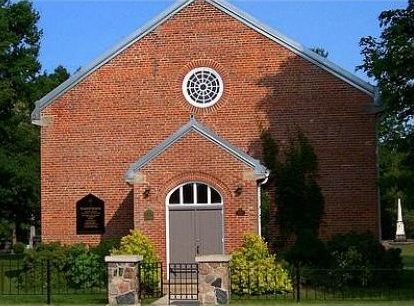Case Study: Historic Leith Church
Placing history and music at the centre of the community: The United Church and Leith community collaborate to fill this community space with life.
The Spark
In 1969 Leith Church closed as an active United Church worship site, and was placed under the Annan Woodford Pastoral Charge. Although it remained dormant for almost 25 years, the community still cherished the church and its graveyard, where local son, famed Canadian painter Tom Thompson, is buried. With a vision to honour its history and to create a community hub, the local community came together to resurrect the site in the early 1990s.
Supported by historical societies and the local community this European Saltbox Church built in 1864 remains at the heart of its community.

Their Journey
With the church and graveyard receiving heritage designation in 1992, a broad group of local supporters formed the Friends of Leith Church (FOLC) as a committee of the church. Their membership included not only local residents, but also the Annan Woodford congregation and minister, the Tom Thomson Memorial Art Gallery, and representatives of the Sydenham Township Council and their heritage committee. Together, they raised $150,000, including government grants, to restore the building. Undertaken in phases over a decade, the work addressed structural issues, replacement and repairs of the roof, windows and brickwork, and restoring the interior finishes.
Outcomes
The restoration was completed in 2002 and the Friends of Leith Church shifted their efforts to developing and maintaining a robust programming schedule including the Leith Summer Festival (five concerts over the summer), religious services, an annual Ceilidh, monthly fiddle jams year-round, a Country Market, and have also hosted special events like weddings and reunions.
The great financial and critical success of the Leith Summer Festival required an increased management and oversight, and it was determined that a committee of the Pastoral charge was no longer the appropriate model. A new non-profit organization was formed in 2017, and they have entered into a lease agreement with the Pastoral Charge to rights to use and maintain the church.
Now a registered charity, the new organization has also partnered with the local Community Foundation to create a permanent endowment to fund the building’s long-term care, while providing donors with charitable receipts.
The Take-Away
Leith Church and the Friends of Leith are early trailblazers in faith building repurposing. As a small community faced with the loss of their only gathering space, they sought innovative alternative models to maintain the heart of their community. Their successes and longevity can be attributed to many interrelated factors:
- The historical and faith significance of the site for the community.
- A history of musical events made it an obvious concert venue.
- Many partners, from historical society to municipal government to local residents were engaged in the process of restoration and maintenance.
- An open-minded faith body (the United Church) enabled the acceptance and evolution of new governance models to best meet the needs of the all partners.
- A core volunteer group drove the process and continues to invigorate Leith today.